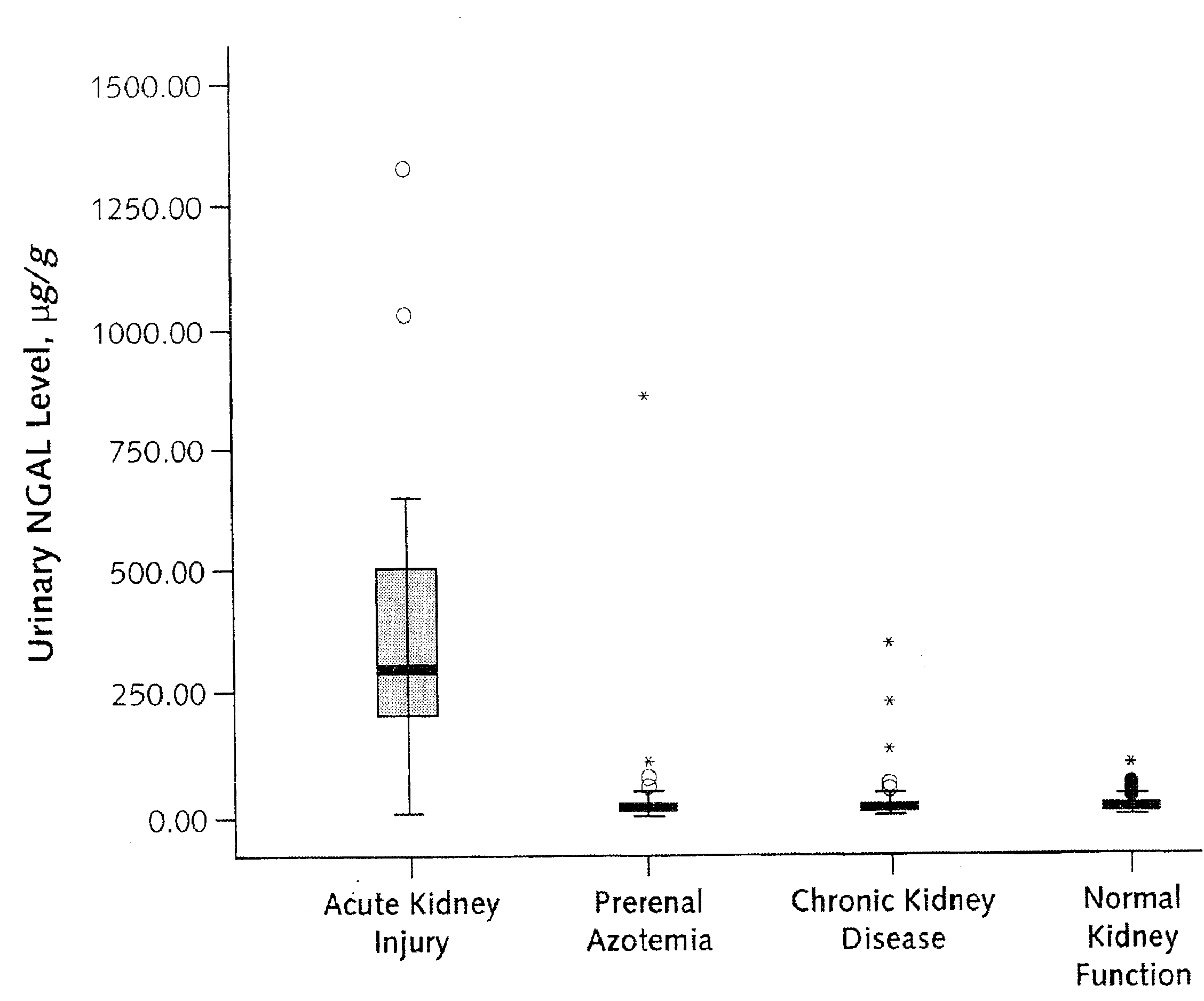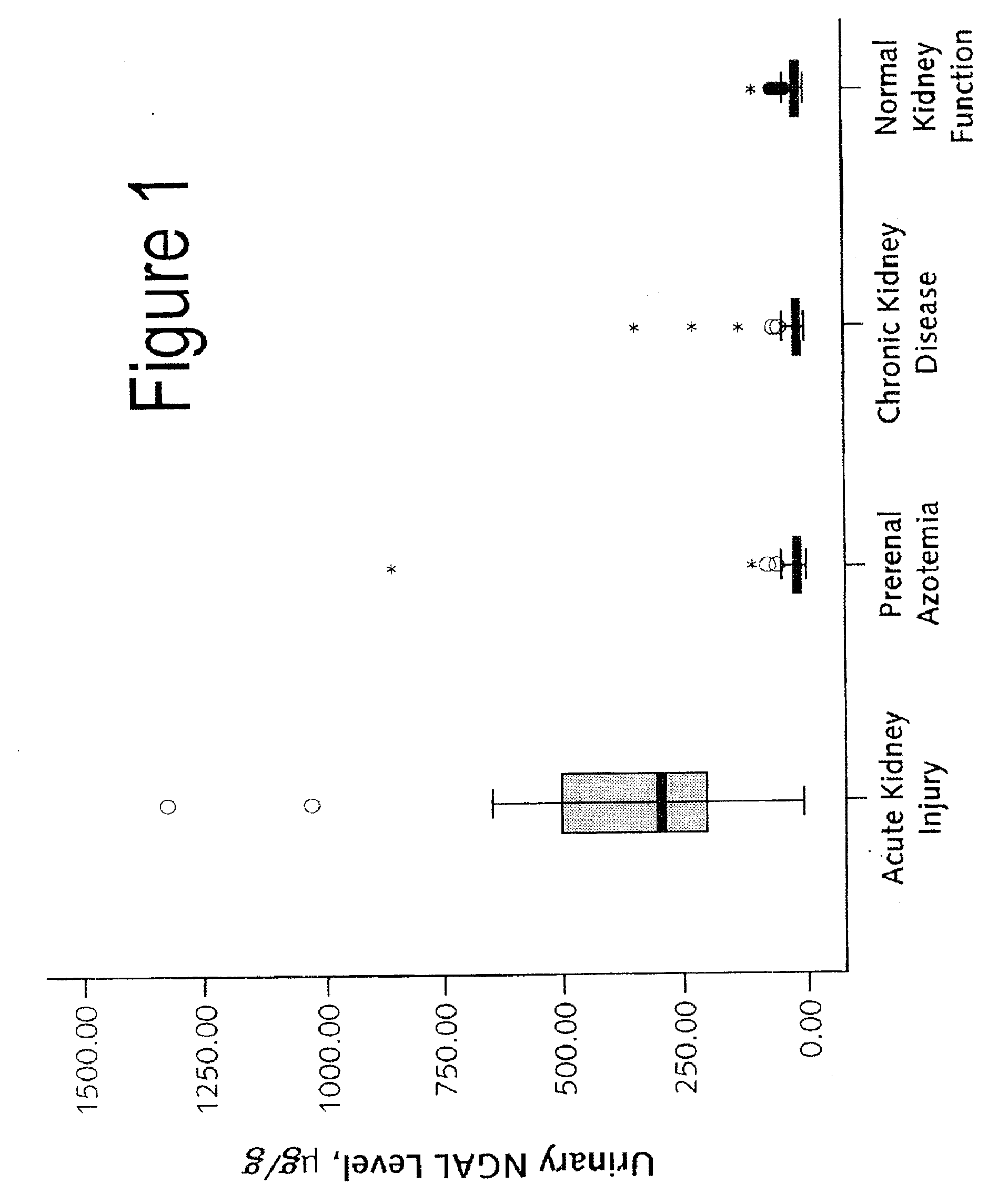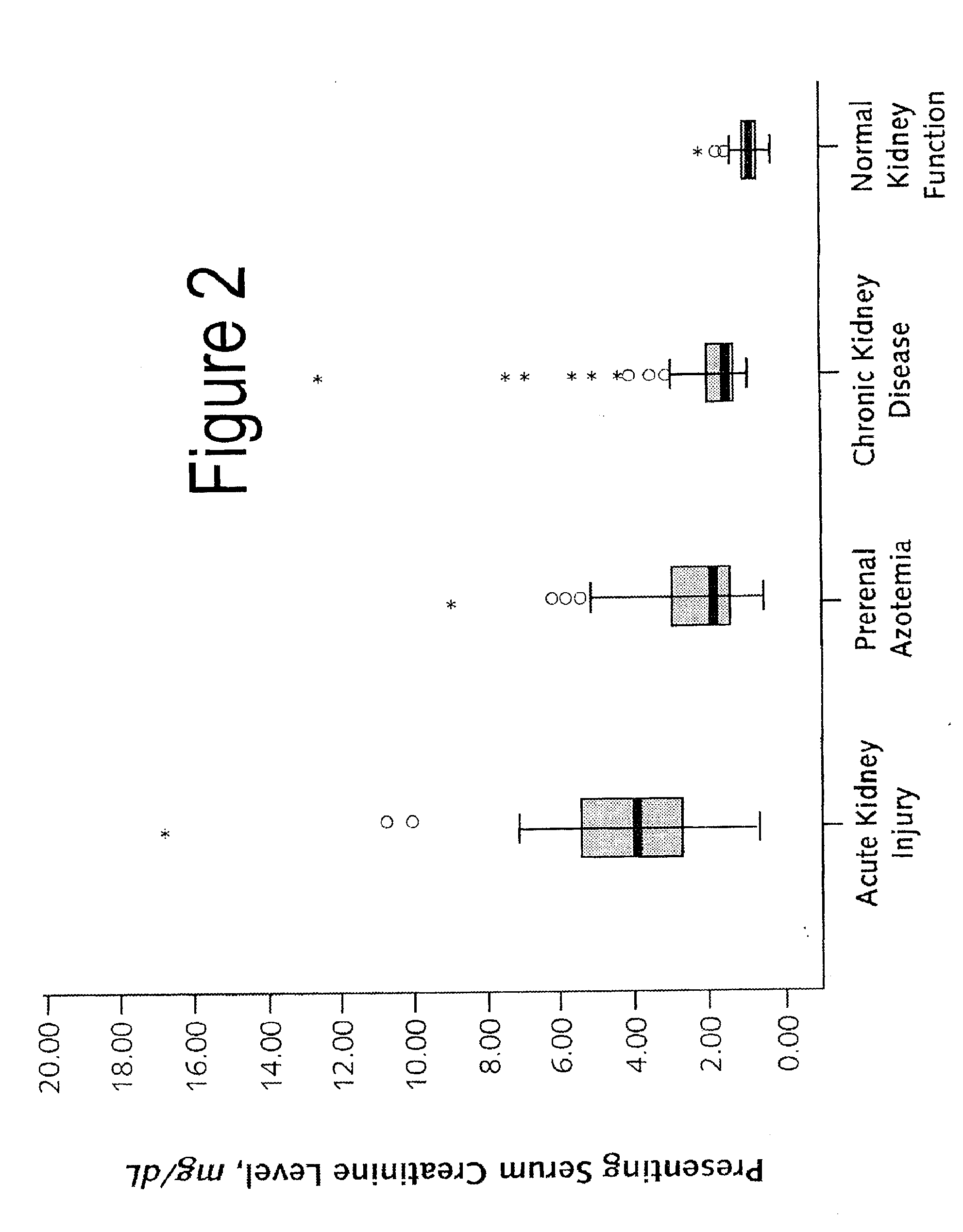Method for distinguishing between kidney dysfunctions
a kidney and function technology, applied in the field of kidney dysfunction differentiation, can solve the problems sensitive method above, and inability to predict the function of the kidney, and achieve the effect of low serum creatinine level
- Summary
- Abstract
- Description
- Claims
- Application Information
AI Technical Summary
Benefits of technology
Problems solved by technology
Method used
Image
Examples
example
[0049]A study was conducted with recruited consecutive patients 18 years and older who visited the Columbia University Medical Center emergency department between 6 a.m. and 12 a.m from March to August 2007. We obtained the first sample of donated urine and blood. We excluded 17 patients who were receiving hemodialysis and 230 patients without subsequent creatinine measurements from further analysis, as shown in FIG. 1.
[0050]Altered kidney function is defined by age- and sex-based criteria: men and women between 18 and 50 years of age with a serum creatinine level greater than 106 μmol / L (>1.2 mg / dL), men older than 50 years with a level greater than 88.4 μmol / L (>1.0 mg / dL), and women with a level greater than 70 μmol / L (>0.8 mg / dL). We estimated GFR by using the Modification of Diet and Renal Disease formula, described in Levey AS et al., Ann Intern Med. 1999;130:461-70, the disclosure of which is incorporated herein by reference.
[0051]Baseline kidney function was defined for 509 ...
PUM
 Login to View More
Login to View More Abstract
Description
Claims
Application Information
 Login to View More
Login to View More - R&D
- Intellectual Property
- Life Sciences
- Materials
- Tech Scout
- Unparalleled Data Quality
- Higher Quality Content
- 60% Fewer Hallucinations
Browse by: Latest US Patents, China's latest patents, Technical Efficacy Thesaurus, Application Domain, Technology Topic, Popular Technical Reports.
© 2025 PatSnap. All rights reserved.Legal|Privacy policy|Modern Slavery Act Transparency Statement|Sitemap|About US| Contact US: help@patsnap.com



